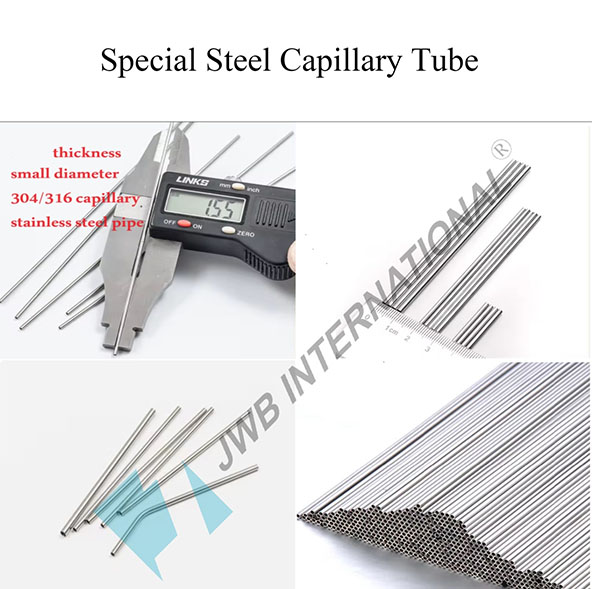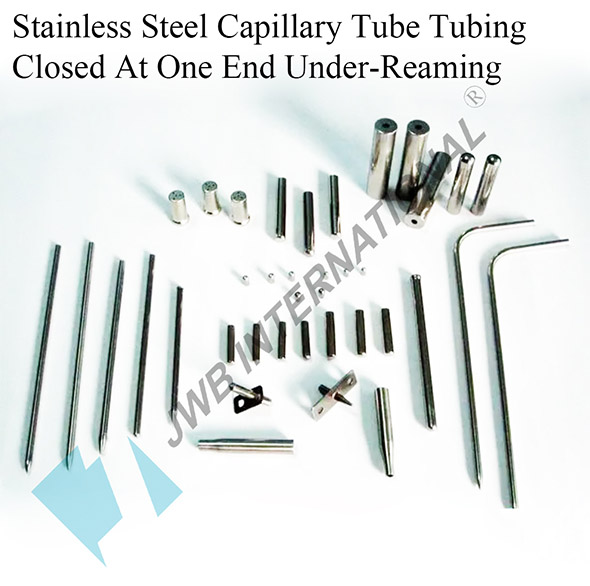Capillary tubes are narrow, long tubes used in various scientific and industrial applications. They operate based on the principle of capillarity, where liquids rise or fall in thin tubes due to surface tension.

A capillary tube is typically composed of a tube, armour, and a protective sleeve.
The capillary tube has a very small internal diameter, making it perfect for isolating a pressure instrument, like a gauge or transmitter, from the process tapping or connection point. Capillary tubing serves to disconnect the direct link between the measuring device and the process tapping location.
Capillary tube uses
Capillary tubes are applied widely in many different fields, like refrigeration, physics, chemistry labs, and others more.
In refrigeration systems, capillary tubes function as expansion devices, controlling the refrigerant flow and ensuring the desired temperature is maintained. They also enable the separation of the measuring instrument, such as a pressure gauge or transmitter, from the process connection.
In chemistry labs, Capillary tube is often used for precise liquid measurements, sample handling, and chromatography.
The functioning of capillary tubes relies on the principle of capillarity, which is driven by the cohesive and adhesive forces between liquids and solids. The equation for capillary rise or fall in a tube takes into account factors such as surface tension, the radius of the tube, and the contact angle between the liquid and the tube walls.
In a refrigeration system, it acts as an expansion device. Consequently, as the refrigerant passes through the capillary tube, the high-pressure, low-temperature liquid refrigerant is converted into a low-pressure, low-temperature liquid refrigerant.
In a refrigeration system, the high pressure corresponds to the condenser pressure, while the low pressure corresponds to the evaporator pressure. Therefore, the function of the capillary tube is to “induce a pressure drop by reducing the pressure of the liquid refrigerant from the condenser pressure to the evaporator pressure.”
The amount of pressure drop across a capillary tube is influenced by its internal diameter and length. As the high-pressure, low-temperature liquid refrigerant exits the condenser coils and moves through the capillary tube, frictional resistance arises between the refrigerant and the inner walls of the narrow tube.
Capillary tube size
Capillary tubes are available in a range of sizes, from a few millimeters to several centimeters in length, and with varying inner diameters. The selection of size depends on the particular application and the type of liquid being utilized. For instrumentation purposes, capillary tubes with diameters between 1/16 inch and 1/8 inch are commonly used. Choosing the appropriate diameter is crucial for optimal performance.
Refrigeration
Capillary tube refrigeration is widely used to control the flow of refrigerant and regulate the cooling process.
Chemistry Labs
Capillary tube uses in laboratory for precise liquid measurements, capillary electrophoresis, and chromatography.
Medical Field
Capillary tubes are used in medical applications for blood sample collection and analysis and so on.
Physics Experiments
In physics experiments, capillary tubes are used for studying fluid mechanics and capillary phenomena.
Microfluidics
Capillary tubes find application in microfluidic devices for controlling the flow of small volumes of liquid.
Capillary tubes have diverse applications across multiple fields. In refrigeration systems, they regulate the flow of refrigerant. In chemistry laboratories, they are used for accurate liquid measurements and chromatography. In medical settings, they are employed for collecting and analyzing blood samples.
Capillary tubes function based on the principle of capillarity, which causes liquids to move up or down in narrow tubes due to the cohesive and adhesive forces between the liquid and the tube walls. This effect is influenced by factors such as surface tension, the radius of the tube, and the contact angle between the liquid and the tube.
The formula for capillary rise involves surface tension (T), tube radius (r), and the contact angle (θ) between the liquid and the tube walls. The capillary tube formula is given by h = (2T cos θ)/(ρgr), where h is the capillary rise, ρ is the density of the liquid, and g is the acceleration due to gravity.
Capillary tubes are available in a range of sizes, with lengths spanning from a few millimeters to several centimeters, and their inner diameters differ depending on the application. The appropriate size is chosen based on the specific requirements and characteristics of the liquid involved.
Capillary tubes play a crucial role in numerous scientific and industrial applications, thanks to their ability to control liquid flow and provide precise measurements. Grasping the uses, operating principles, formulas, sizes, and applications of capillary tubes allows us to recognize their importance across various domains of science and technology.
